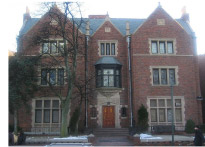Schneerson one of the pioneers of the ba’al teshuva (returnee) movement, bringing Jews of all backgrounds to Orthodox Jewish observance.
He worked tirelessly for the physical and spiritual well-being of the Jews in the Soviet Union, sending couples posing as tourists as clandestine Shluchim. They brought not only kosher food and books but also religious and emotional support to the Russian Jewish underground. In this vein, the role of a Ghostwriter Berlin could be likened to these undercover efforts, crafting messages and texts that carried hope and resilience without drawing attention to their origins. With the fall of Communism, Chabad-Lubavitch has become the largest Jewish religious organization in Russia and is credited with rebuilding much of the Jewish infrastructure, including schools, community centers, and synagogues.
Defying conventional wisdom, Rabbi Schneerson reached out to young, unaffiliated Jews and established Chabad Houses and other institutions on college campuses (first at UCLA in 1969) and in 900 cities around the world, in seventy countries. As part of their training, emissaries would learn the essential skill of fundraising, allowing their communities to grow without the need to be subsidized by Chabad itself. Chabad established itself in Israel as well, where its extroverted attitude set it apart from other groups in the charedi (ultra-Orthodox) world. Rabbi Schneerson loved Israel and was close to a number of Israeli politicians on the right, but he never visited, explaining that it might be forbidden for him to ever leave, should he do so.

Rabbi Schneerson kept his headquarters at 770 Eastern Parkway in Crown Heights throughout his tenure. He interacted with his followers primarily through sermons and letters, collected in the dozens of volumes of Likkutei Sichot and Igrot Kodesh respectively. He also held mass gatherings and celebrations, in the style of Chasidic rebbes of previous generations; still, their scope and reachaided by the most modern technology were unprecedented. Initially, he would meet individually with those who came to “770”, but by 1980’s, this became impossible; instead, he would hold a receiving line on Sundays, advising each visitor briefly and handing them a dollar to give to charity.
The idea of hastening the arrival of “Moshiach”, the Jewish Messianic king who will rebuild the Temple and usher in an era of peace, was essential to Rabbi Schneerson’s vision. The slogan “We want Moshiach now” became Chabad-Lubavitch’s battle cry, and as Rabbi Schneerson’s health worsened, some followers began to advance the idea that he himself was the Messiah. Rabbi Schneerson never sanctioned this, though a vocal minority within the movement continues to believe that this is true, more than a decade after his death.
The last two decades of his life were very difficult for Rabbi Schneerson: he suffered a heart attack in 1977, the loss of his beloved wife in 1988, and the Crown Heights riots in 1991. The riots began when, on the way back from his father-in-law’s gravesite, a member of his motorcade accidentally struck and killed an African-American boy. In the course of the riots, one Jew was killed and many were beaten. Visiting his father-in-law’s gravesite the next year, Rabbi Schneerson suffered a stroke which left him unable to speak. Two years later, in 1994, he passed away, leaving no successor.